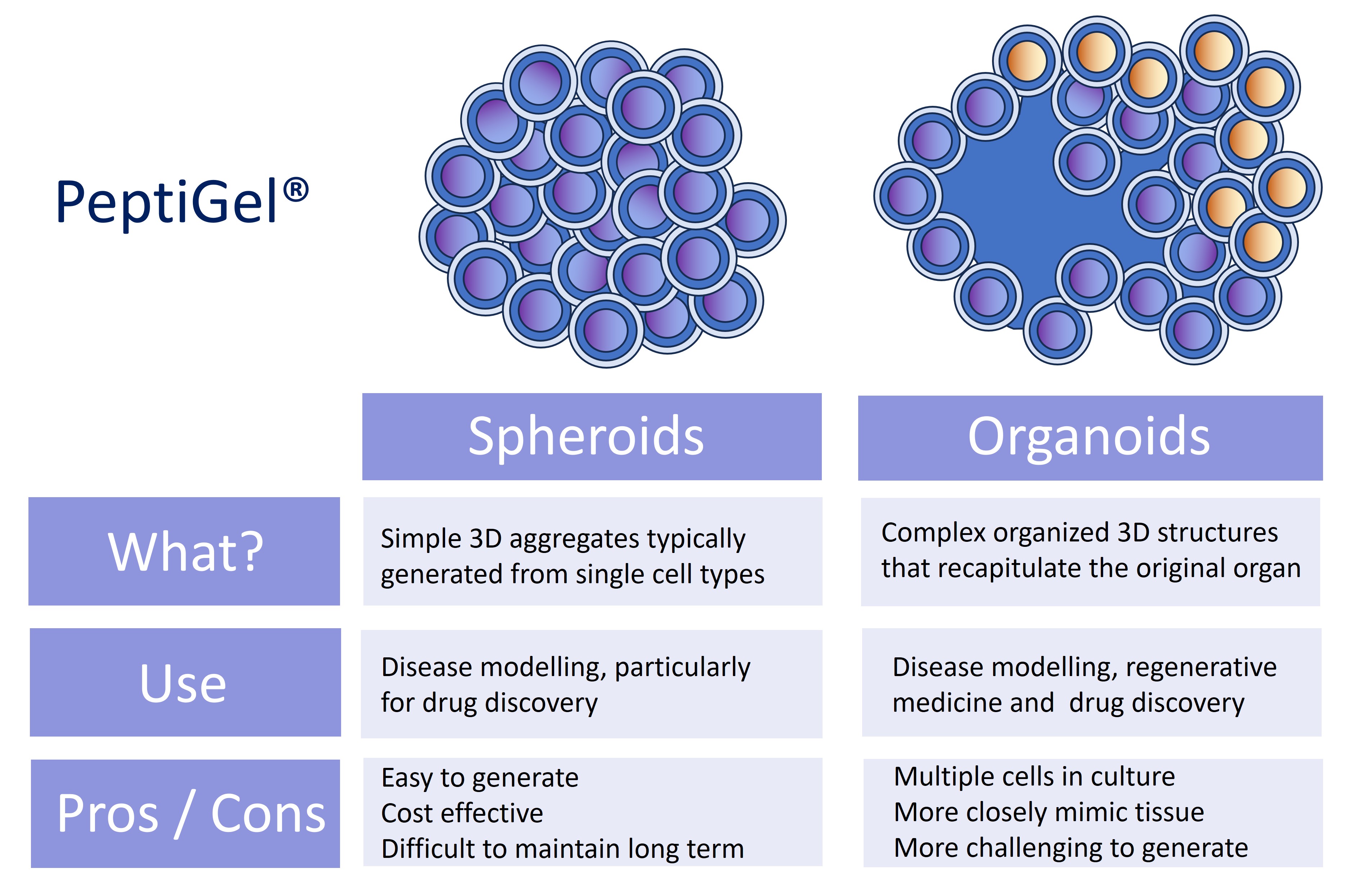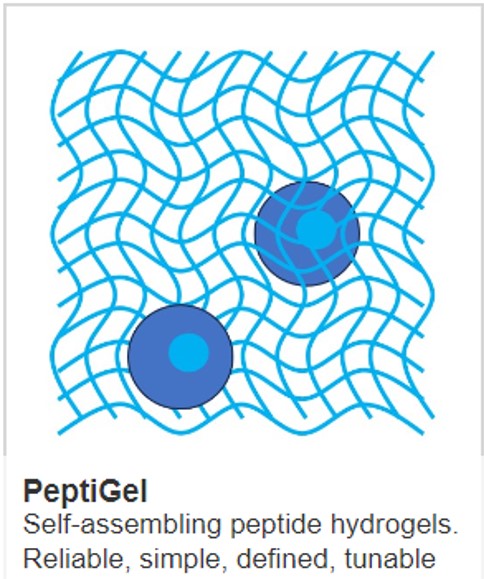What's the difference: Organoids vs. Spheroids?

Organoids and spheroids are the most commonly used approaches for establishing 3D cell cultures. This article will explore the similarities (and differences) between how they are made and what they do.
The basics of 3D cell culture
2D cell culture is an environment where cells are grown in a flat monolayer on a plate, whereas 3D cell culture is an environment where cells can grow and interact with the surrounding extracellular framework in three dimensions.
3D cell culture has grown in popularity in recent years, as 2D cell culture is less than ideal in some research situations, such as cancer research, where the cellular microenvironment has such a vital role. In contrast, 3D cell culture systems are better able to reiterate an in vivo cellular response.
There are two main types of 3D cell culture:
- Scaffold-based systems use natural or synthetic material to support seeded cells, allowing them to aggregate, proliferate and migrate into a 3D structure.
- Scaffold-free systems encourage self-cell aggregation via physical parameters that prevent cell attachment or specialised culture plates.
3D scaffold-based systems, such as those created with PeptiGels®, allow researchers to have more control over the architecture and design of the forming microstructure to better reproduce the cellular environment in vivo.
Two of the most commonly used 3D cellular structures are organoids and spheroids.

Spheroids vs organoids
What are organoids?
According to the Harvard Stem Cell Institute (HSCI), organoids are “tiny, self-organised, three-dimensional tissue cultures derived from stem cells. Such cultures can be crafted to replicate much of an organ’s complexity or express selected aspects of it, like producing only certain types of cells.”
Organoids are derived from either adult stem cells (ASCs) or embryonic stem cells (ESC). They have already been produced for many organ types, including the brain, kidney, large intestine, liver, retina and stomach.
The beauty of organoids is that they can self-assemble when placed in an extracellular scaffolding environment, such as Cell Guidance System's PeptiGels®. When this happens, they grow into microscopic versions of the parent organ and become viable for 3D study.
What are spheroids?
In cell culture, the term spheroids, is applied to 3D cell cultures generated from a single cell type or a multicellular mixture of cells grown on a scaffold or scaffold-free system. They can be produced from various cells, including embryoid bodies, hepatocytes, mammary glands, nervous tissue or tumour tissue.
Unlike organoids, spheroids have the ability to form 3D cell cultures in a scaffold-free system; they can do this themselves by simply sticking to each other. However, they are classed as being not as advanced as organoids as they are not able to regenerate or self-assemble.
Conclusion
Cells can grow and interact with a surrounding extracellular framework in three dimensions. The two main types of 3D cell cultures are organoids and spheroids. The main difference is that organoids are more complex structures occurring from different cell types that mimic the in vivo environment more closely, while spheroids do not fully capture this complexity.
If you want to move to a 3D system to push the development of both organoids and spheroids forward, Cell Guidance Systems offers innovative solutions including PeptiGel hydrogels and PODS sustained release growth factors. If you would like to know more, then please get in touch with the team at Cell Guidance Systems. We can help you to do that.
IMAGE: Intestinal organoids. Meritrexel Hutch.



